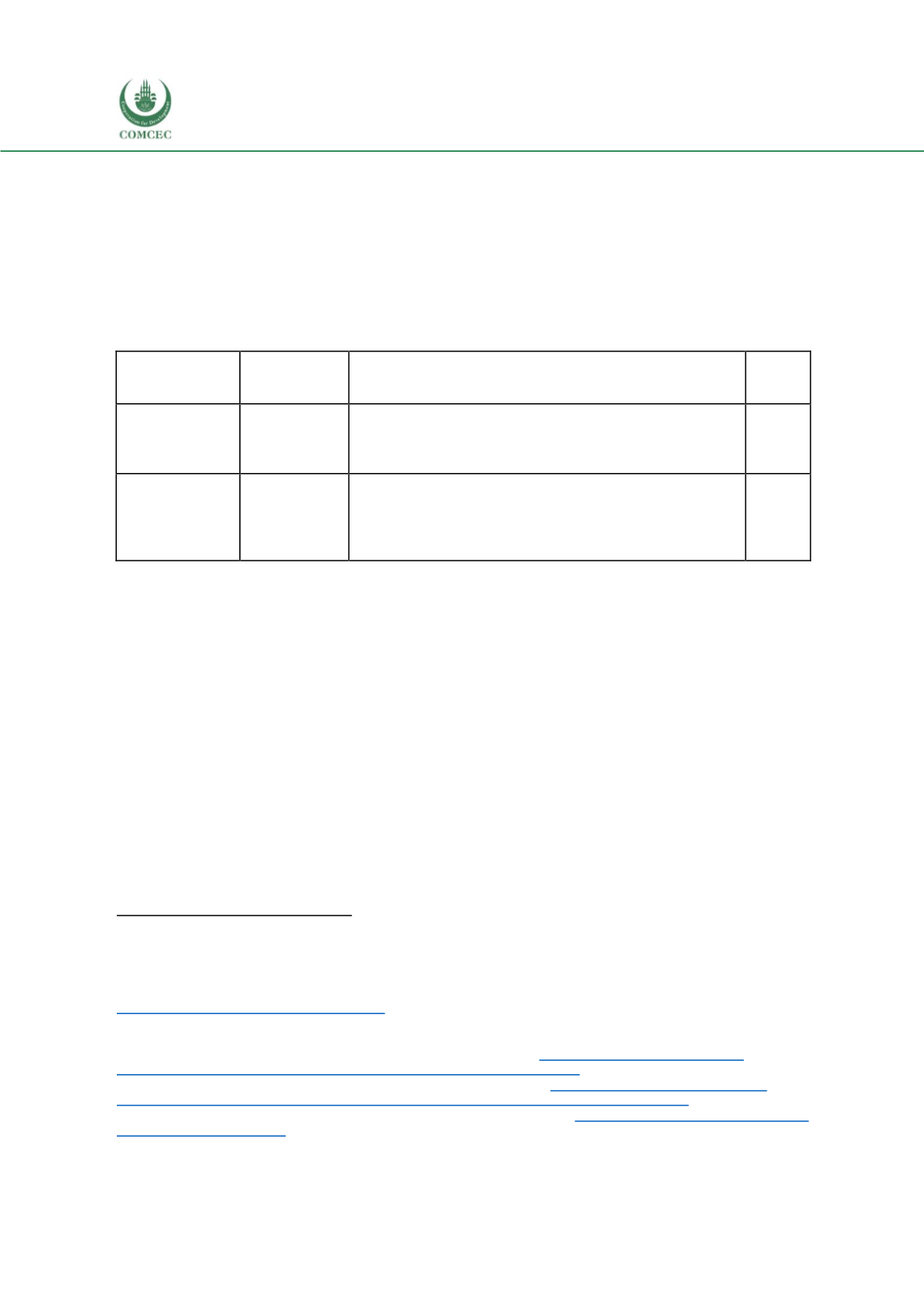

Increasing the Resilience of the Food Systems
In Islamic States in Face of Future Food Crises
64
Third, the FDA activelymonitors the risk of foodborne illness through its Coordinated Outbreak
Response and Evaluation (CORE) network,
235
where it continuously monitors outbreaks and
proactively audits food premises in the U.S. and abroad toensure food safety standards are being
met. Two-hundred ninety-five audits and over 650 recalls
236
were carried out in 2018.
237
Mitigation: Contingency Planning
The U.S. has instituted extensive contingency plans toaddress potential risks to the food system.
Table 34: U.S. Contingency Plans
Plan
Food
Security
Pillar
Details
Lead
Entity
CARVER
military
planning tool
Availability;
Accessibility
Several government entities conduct routine risk
assessments for strategic food locations including farms,
retail infrastructure and food processing facilities to assess
the vulnerability and impact of domestic attacks.
238
FDA;
USDA
CFSCAN public
health risk
assessment unit
Utilization;
Food Safety
The FDA routinely carries out risk assessments through its
CFSCAN unit, collaborating with other entities, and
developing a suite of tools. Examples include QPRAM, a
virtual laboratory that uses past contaminations to predict
the likelihood and risk of new contaminations arising.
239
FDA
It is important to note from the above examples that while food security remains the core focus
of the U.S. government through the USDA and FDA, the country has also taken important steps
to defend the food supply chain from intentional adulteration. While thi s report focusses
primarily on food security as outlined in the objective, food defense is also an important
function, whereby the food system is defended against the risk of intentional adulteration.
Measures used to defend the food supply chain includes ensuring imports meet required
standards through the Food Suppler Verification program,
240
done through the FDA.
Mitigation: Risk and Vulnerability Reduction
In terms of disaster planning, FEMA set aside $29 million in emergency funds t o respond to
disasters in 2019, which includes provisions for food aid.
241
The USDA is also authorized to use
a portion of its budget for nutrition assistance to issue emergency food stamps to households in
affected areas.
242
The USDA actively supports expanding the capacity to store grains on-farm
235
FDA. (2019, June 28). Outbreak of Foodborne Illness.
236
Food Industry Counsel. (n.d.).Another Record Year for Recalls – 2018 in Review.
237
FDA. (2019, March 31). FDA-TRACK.
238
FDA. (n.d.). Vulnerability Assessments of Food
Systems – Final Summary Report – June 2009 – February 2012. Retrieved from
https://www.fda.gov/media/84376/download239
FDA. (n.d.). CFSAN Risk & Safety Assessments. Retrieved
fromhttps://www.fda.gov/food/science-research-food/cfsan-risk-safety-assessments
240
GMA. (n.d.). Foreign Supplier Verification ProgramRule. Retrieved fro
m https://www.gmaonline.org/issues- policy/product-safety/food-and-product-safety/food-and-product-safe/fsvp-rule/241
FEMA. (2019, May). Disaster Relief Fund: Monthly Report. Retrieved fro
m https://www.fema.gov/media-library- data/1557446519885-2a8cec0f214fc31799f448d56cd78856/May2019DisasterReliefFundReport.pdf242
USDA. (2019, June 27). Food Assistance in Disaster Situations. Retrieved fro
m https://www.fns.usda.gov/disaster/food- assistance-disaster-situations















